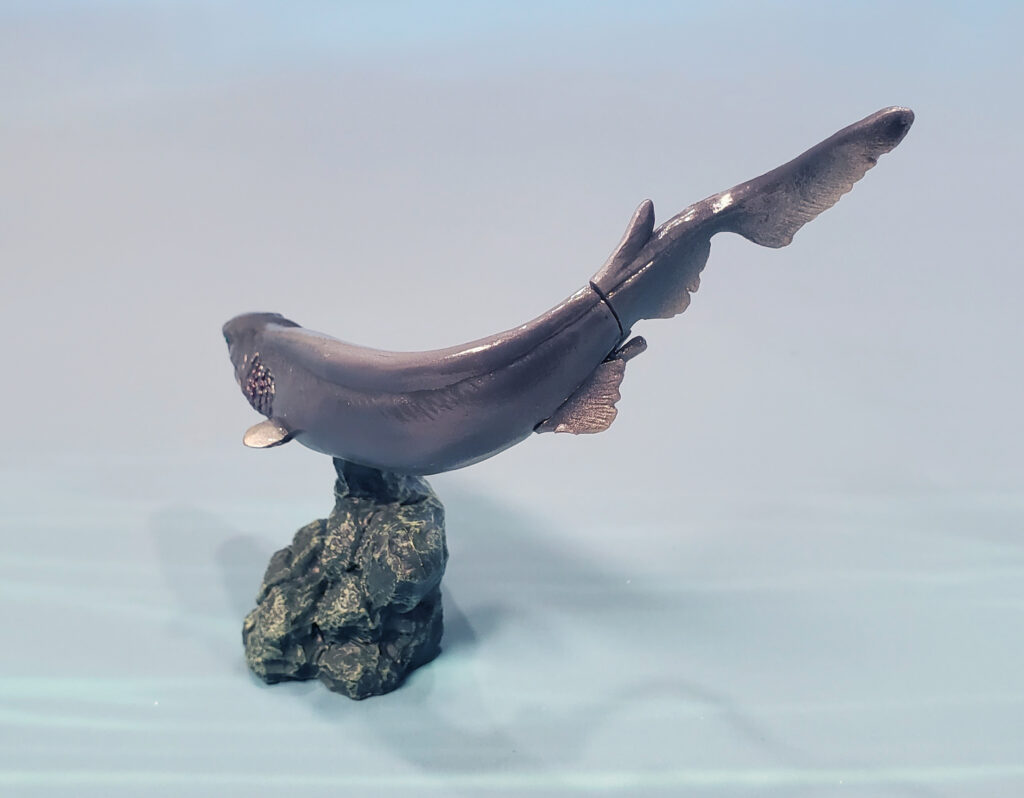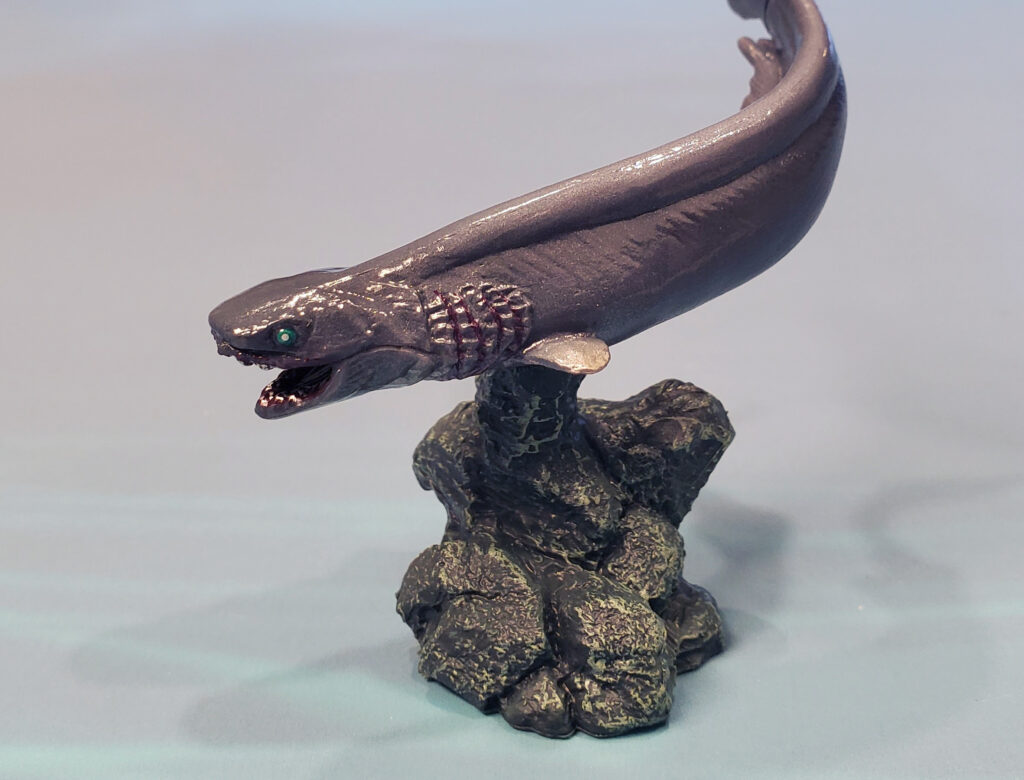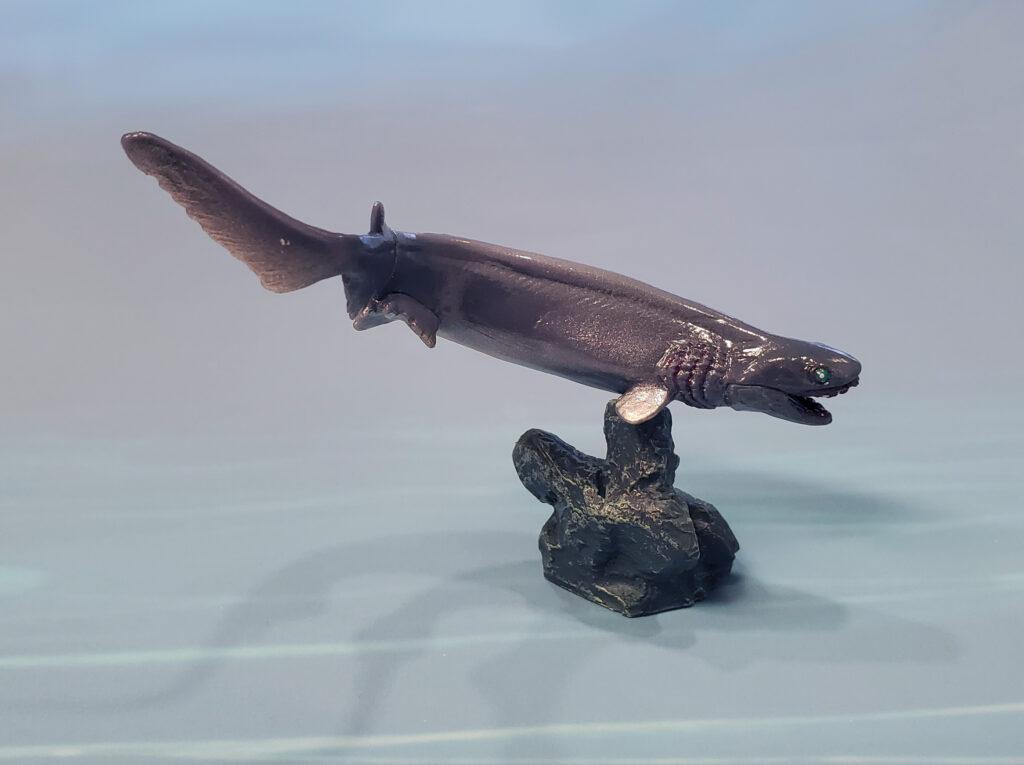The frilled shark (Chlamydoselachus anguineus) is an enigmatic anguilliform shark in the family Chlamydoselachidae. There is one other extant member of this family, the South African frilled shark (C. africana). They are considered among the most primitive extant sharks. Frilled sharks occur nearly worldwide, usually in the waters of the outer continental shelf and upper continental slope. They are mostly bathydemersal, occuring at depths to 1,570 meters (usual depth 120-1,280 meters). During the day, they usually occur near the floor of the ocean, migrating up at night to feed on cephalopods, other small sharks, and bony fish in the water column. Today we will be looking at Bandai’s rendition of this species, which was produced in 2022 for the Mini Ancient Fish collection in their Diversity of Life on Earth line. This is not my first figure of this species. I originally had the Epoch version produced for their Living Fossils collection, but replaced it when this Bandai model came out. The species has also been made by Takara Tomy A.R.T.S., Colorata, Ikimon, and Discovery Science, among others I may not be aware of. Safari Ltd. produced a frilled shark for their Prehistoric Sea Life TOOB, but as that set represents prehistoric fish, it might represent another species in the genus Chlamydoselachus or Rolfodon goliath, which was previously placed in the genus Chlamydoselachus.

The body on Bandai’s model comes in two pieces, with most of the body up to just past the pelvic fins as one piece and the rest of the body and tail as a second piece. It also comes with a habitat-style rock base that it attaches to via a small peg on the base (meaning if one wanted to display the fish off of its base, there wouldn’t be an obtrusive peg on the fish itself). The figure is sculpted in a dynamic, undulating pose. Measured along its midline, the body length comes to 10.5 cm for a scale of 1:12.9-1:14.3 for an average range of 135-150 cm, or a scale of 1:19 for a maximum-sized specimen of 200 cm, using FishBase as a reference (when data are available, I use FishBase as my standard for measurements and calculating scales).

The sculpt is overall smooth yet well detailed. Eyes and nostrils are both sculpted. The pectoral fins and dorsal fin (which on most sharks would be the second dorsal fin; frilled sharks lack the first dorsal fin) are the correct shape. I like the wear-and-tear effect given to the pelvic fins, anal fin, and caudal fin. The pelvic fin has claspers, indicating the figure was sculpted as a male. The characteristic ‘frilled’ gill flaps are present and there is a correct number of gill slits (6). The morphology of the teeth is accurate, albeit too few in number (which is totally expected in a figure of this size).


The base color of most of the body is a dark slate grey. The underside is slightly paler. The inside of the mouth and the highlights to the gill slits are red and the eyes are green with white reflections. Overall, an accurate paint job for the species.

In closing, this is a fantastic rendition of C. anguinus in figure form! There is no shortage of good options out there. The aforementioned versions by Epoch, Takara, Ikimon, and Colorata are all good as well. Not being a specialist on sharks, I would have a hard time recommending one over the other. These particular figures, including today’s, are available from Japan, which could make them more expensive. However, because this Bandai version is the newest, it might be the cheapest and easiest to find. Anyway, I hope you are all enjoying Shark Week here on the Blog so far! Stay tuned, there are more cartilaginous critters coming!

Disclaimer: links to Ebay and Amazon on the AnimalToyBlog are affiliate links, so we make a small commission if you use them. Thanks for supporting us!




Great review! I have the Safari TOOB frilled shark but would prefer to get a better one eventually.